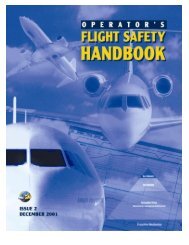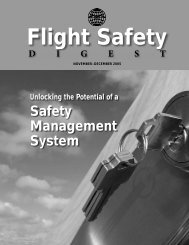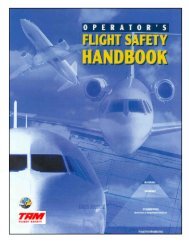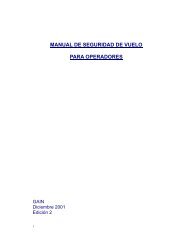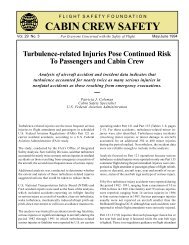Basic Aviation Risk Standard Resource Sector - Flight Safety ...
Basic Aviation Risk Standard Resource Sector - Flight Safety ...
Basic Aviation Risk Standard Resource Sector - Flight Safety ...
Create successful ePaper yourself
Turn your PDF publications into a flip-book with our unique Google optimized e-Paper software.
Appendix 5:<br />
Threat 22.0: Rescue Hoist Operations<br />
The helicopter is required to perform hoisting operations and, through manipulative<br />
error, results in an abnormal situation resulting in an accident<br />
Control 22.1: Aircrew Hoist Experience<br />
34<br />
Threat Controls<br />
All aircrew assigned to hoist operations shall have completed<br />
an approved and documented training program reviewed<br />
by the Company aviation specialist personnel. To maintain<br />
currency, a minimum of 3 hoist cycles within the past<br />
12 months is to form part of the training schedule for<br />
all aircrew.<br />
Threat 22.0:<br />
Rescue Hoist<br />
Operation<br />
Control 22.2: Training Program<br />
The aircraft operator will establish a documented training<br />
program and minimum qualification criteria for all personnel<br />
involved in hoist operations, including (but not limited to)<br />
the aircrew, hoist operator and down-the-wire swimmer<br />
(where applicable).<br />
The training program shall include an initial competence course<br />
followed by annual refresher training.<br />
Control 23.1: Refuelling System Inspection<br />
An initial and then annual inspection thereafter of offshore<br />
installation fuel system is to be conducted by the aviation<br />
specialist designated by the Company or aircraft operator.<br />
The inspection schedule shall include a review of refuelling<br />
procedures that encompasses daily testing, sampling and<br />
sample retention practices.<br />
Control 22.3: Hoist Equipment<br />
All role specific equipment including the hoist, lifting device,<br />
harnesses, PPE and associated tools are, at minimum, to<br />
be maintained, tested and certified in accordance with the<br />
manufacturers approved maintenance program.<br />
Control 22.4: Night Hoist Offshore Operations<br />
Night hoist operations shall only be conducted in an aircraft<br />
that is specifically equipped to do the task (including auto-<br />
hover capability) and with a crew specifically trained in night<br />
hoist operations.<br />
Threat 23.0: Aircraft Fuel Complication – Offshore Operations<br />
The helicopter experiences fuel supply complications resulting in engine flame-out and<br />
aircraft accident<br />
Threat Controls<br />
Threat 23.0:<br />
Aircraft Fuel<br />
Complication<br />
Hoist Experience<br />
Training Program<br />
Refuelling System<br />
Inspection<br />
Offshore Alternates<br />
Hoist Equipment<br />
Night Hoist Operations<br />
Control 23.2: Offshore Alternates<br />
One-way fuel computations and offshore-only alternate<br />
diversion shall not be used unless the offshore destination has<br />
been approved for OEI landings by specialist aviation advice.<br />
<strong>Flight</strong> SaFety Foundation BaSic aviation RiSk StandaRd – <strong>Resource</strong> <strong>Sector</strong> © version 3


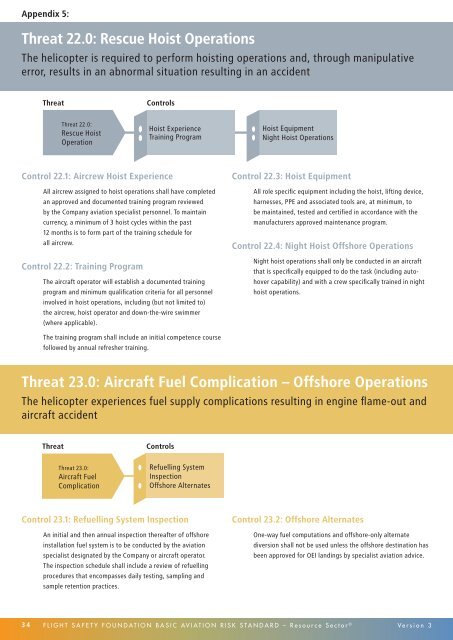

![Download this Issue [PDF 7 MB] - Flight Safety Foundation](https://img.yumpu.com/18859635/1/190x245/download-this-issue-pdf-7-mb-flight-safety-foundation.jpg?quality=85)
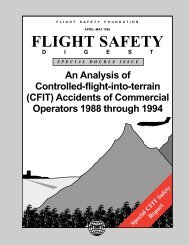
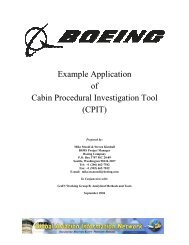
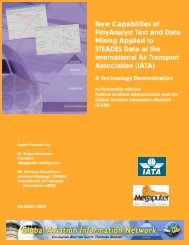
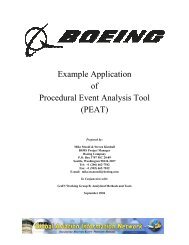
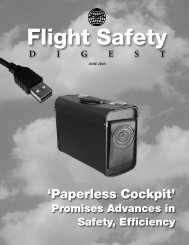
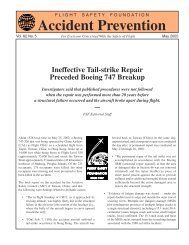
![Download [PDF 8 MB] - Flight Safety Foundation](https://img.yumpu.com/18859366/1/190x245/download-pdf-8-mb-flight-safety-foundation.jpg?quality=85)
